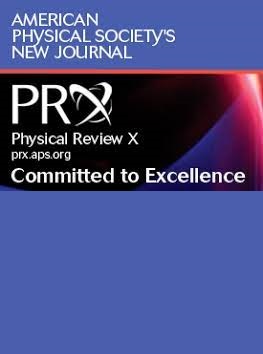Spin- 1/2 Kagome Heisenberg Antiferromagnet: Machine Learning Discovery of the Spinon Pair-Density-Wave Ground State
IF 11.6
1区 物理与天体物理
Q1 PHYSICS, MULTIDISCIPLINARY
引用次数: 0
Abstract
The spin-1/2 kagome antiferromagnet (AFM) is one of the most studied models in frustrated magnetism since it is a promising candidate to host exotic spin-liquid states. However, despite numerous studies using both analytical and numerical approaches, the nature of the ground state and low-energy excitations in this system remains elusive. This challenge is related to the difficulty in determining the spin gap in various calculations. We present the results of our investigation of the kagome AFM using the recently developed group equivariant convolutional neural networks—a novel machine learning technique for studying strongly frustrated models. This approach, combined with variational Monte Carlo method, introduces significant improvement of the achievable results’ accuracy for frustrated spin systems in comparison with approaches based on other neural-network architectures. Contrary to the results obtained previously with various methods, which predicted自旋-1/2鹿目海森堡反铁磁体:机器学习发现自旋子对密度波基态
自旋-1/2 神户反铁磁体(AFM)是挫折磁学中研究最多的模型之一,因为它有希望承载奇异的自旋液态。然而,尽管使用分析和数值方法进行了大量研究,该系统中基态和低能激发的性质仍然难以捉摸。这一难题与各种计算中难以确定自旋间隙有关。我们介绍了利用最近开发的群等变卷积神经网络--一种用于研究强挫折模型的新型机器学习技术--对 kagome AFM 进行研究的结果。与基于其他神经网络架构的方法相比,这种方法与变分蒙特卡罗方法相结合,显著提高了沮旋系统的可实现结果的准确性。与之前用各种方法预测 Z2 或 U(1) Dirac 自旋液态的结果相反,我们的结果有力地表明,可果美晶格反铁磁体的基态是一种自旋子对密度波,它不会打破时间反转对称性或任何晶格对称性。这种状态是由于自旋子能谱中两个狄拉克点附近的自旋子库珀配对不稳定性而出现的,它类似于之前在掺杂不足的杯状超导体中研究的与伪隙相有关的对密度波状态。这种状态的能量明显低于通过苏(2)对称密度矩阵重正化群计算和其他方法发现的最低能量状态。 美国物理学会出版 2025
本文章由计算机程序翻译,如有差异,请以英文原文为准。
求助全文
约1分钟内获得全文
求助全文
来源期刊

Physical Review X
PHYSICS, MULTIDISCIPLINARY-
CiteScore
24.60
自引率
1.60%
发文量
197
审稿时长
3 months
期刊介绍:
Physical Review X (PRX) stands as an exclusively online, fully open-access journal, emphasizing innovation, quality, and enduring impact in the scientific content it disseminates. Devoted to showcasing a curated selection of papers from pure, applied, and interdisciplinary physics, PRX aims to feature work with the potential to shape current and future research while leaving a lasting and profound impact in their respective fields. Encompassing the entire spectrum of physics subject areas, PRX places a special focus on groundbreaking interdisciplinary research with broad-reaching influence.
 求助内容:
求助内容: 应助结果提醒方式:
应助结果提醒方式:


